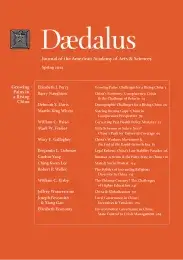China & Globalization
In recent decades, China has become increasingly enmeshed in global institutions and global flows. This article places that phenomenon into historical perspective via a look back to important globalizing trends of a key earlier period: the late 1800s through early 1900s. The essay draws heavily on C. A. Bayly's discussion of that period, which emphasizes the way that moves toward uniformity do not necessarily produce homogeneity. Bayly's work is used both to illustrate the limitations of some competing ideas about contemporary globalization and how China is or is not being transformed by it, and to provide a basis for arguing that we are again seeing, now in China, important moves toward uniformity that are not erasing important differences between cultures and countries.
